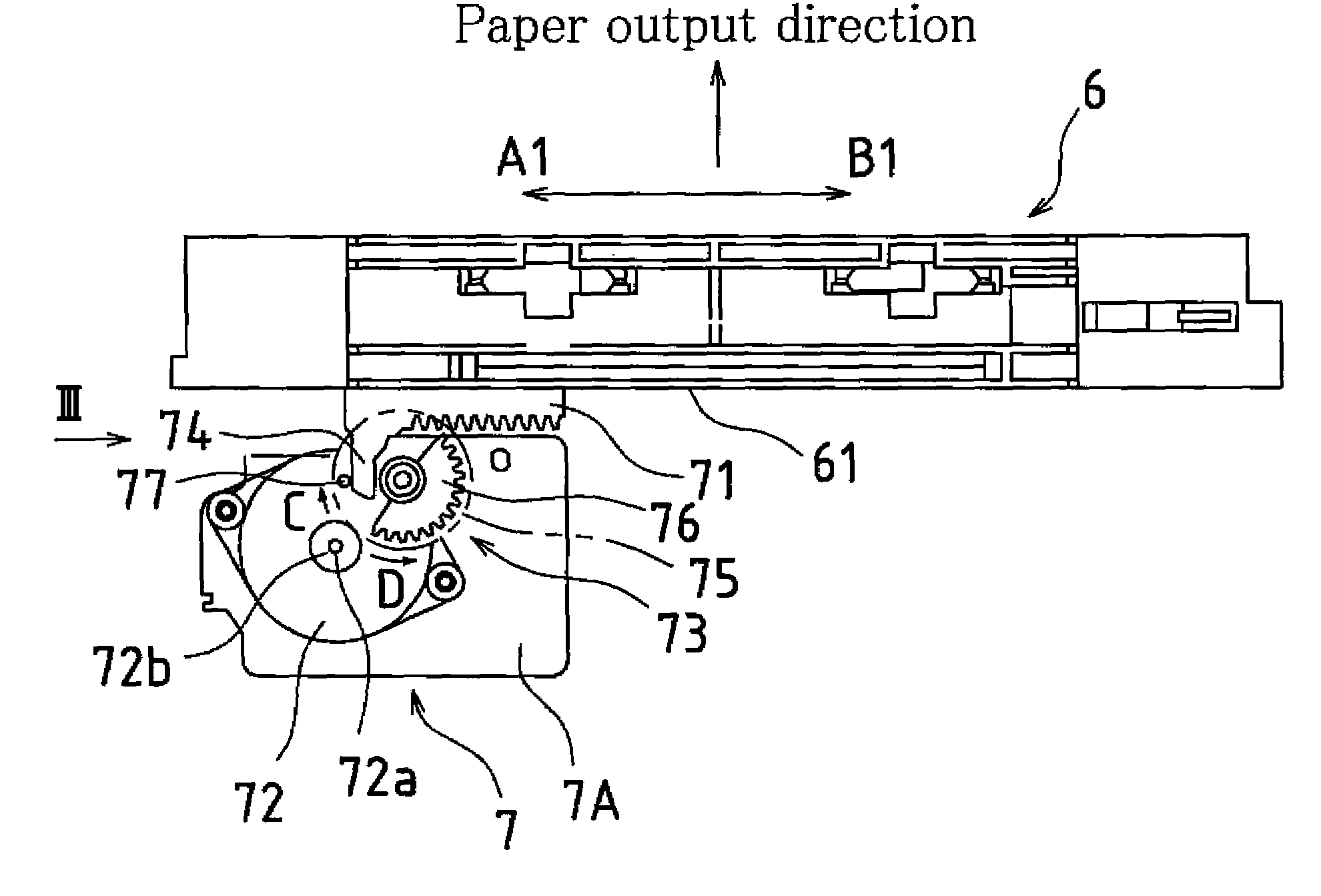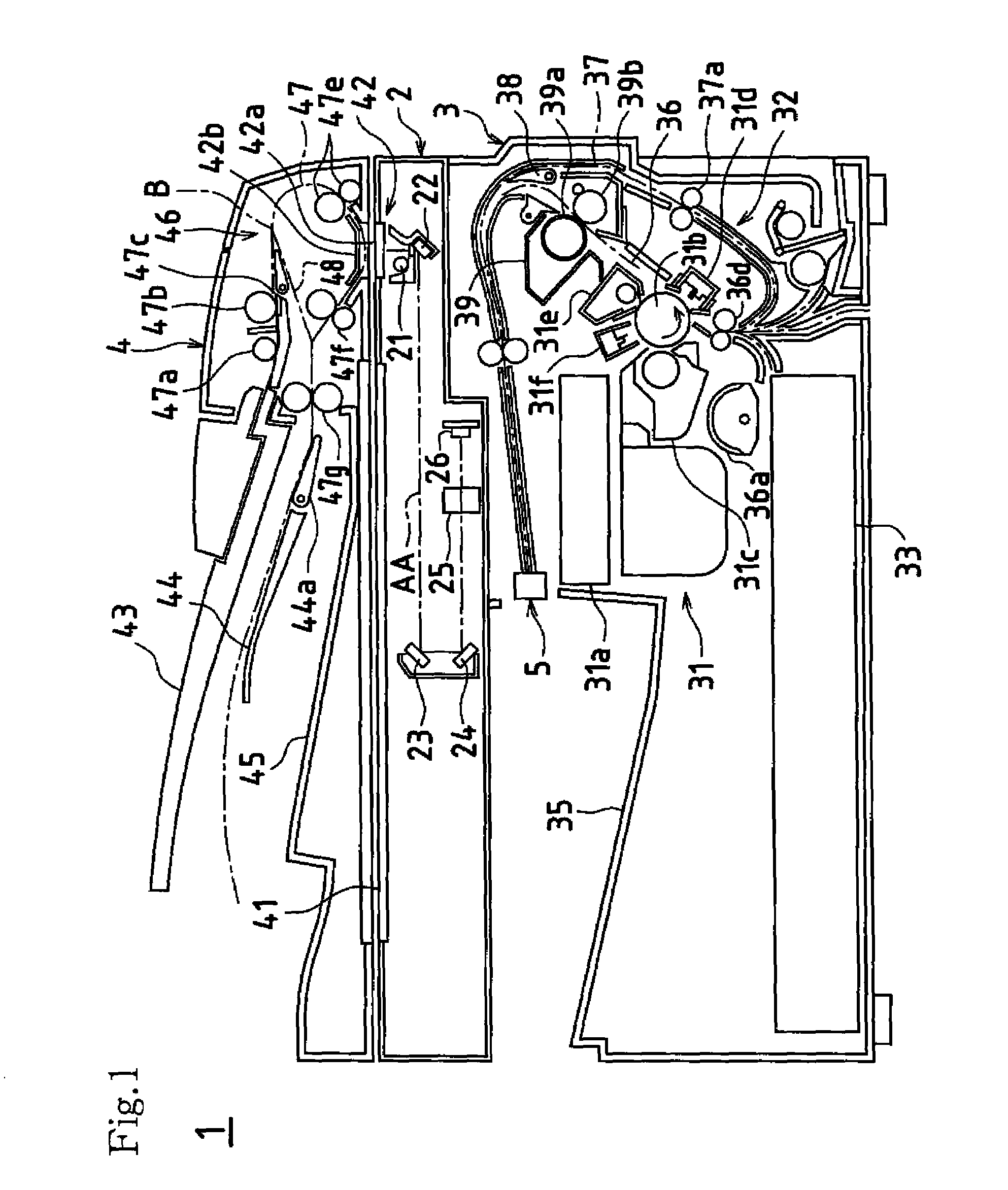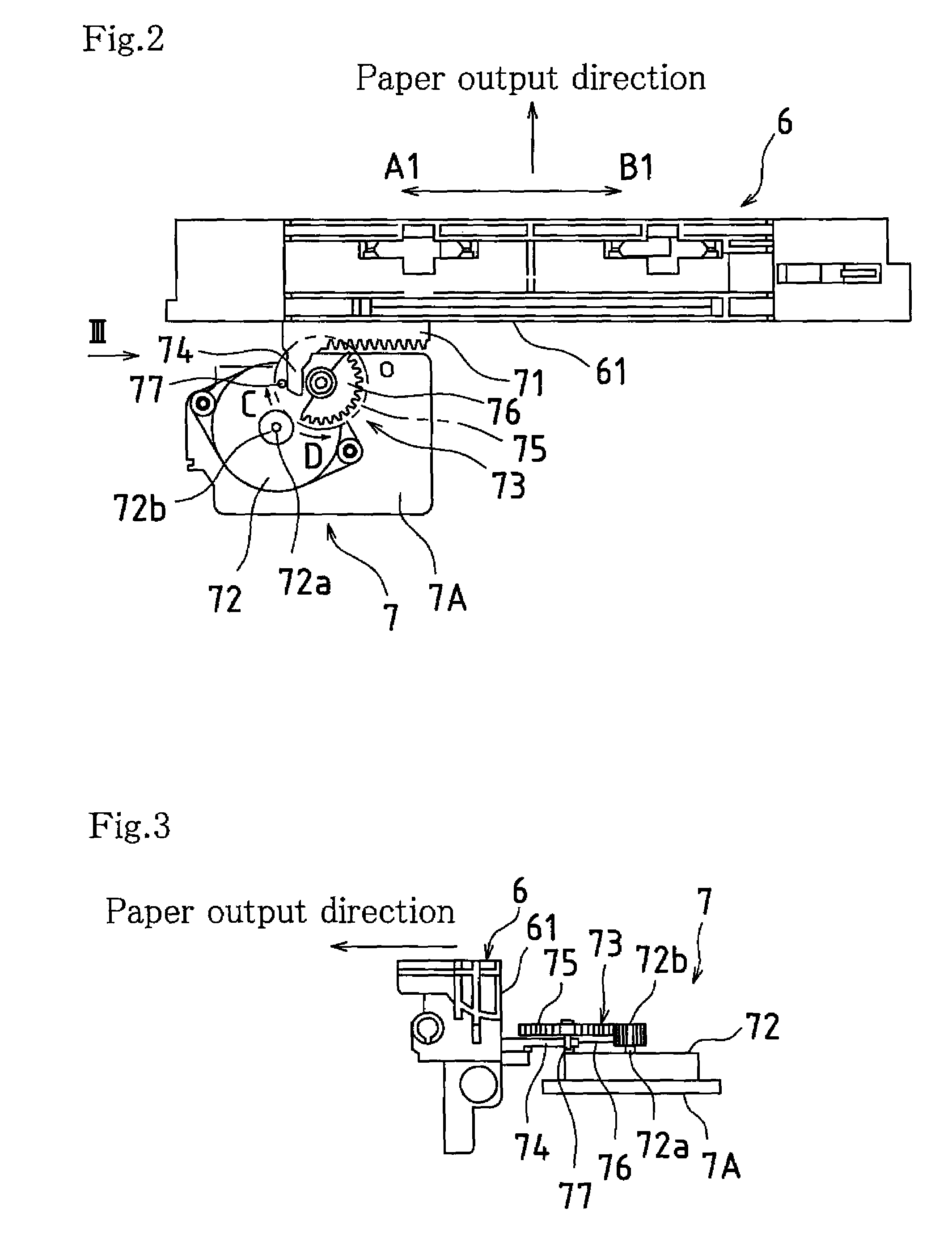Position control device for moving member
a technology of moving parts and control devices, which is applied in the direction of gearing, hoisting equipment, instruments, etc., can solve the problem of limiting the position of the stopper, and achieve the effect of reducing the number of components, quick fixation, and simplifying the structure of the image forming apparatus
- Summary
- Abstract
- Description
- Claims
- Application Information
AI Technical Summary
Benefits of technology
Problems solved by technology
Method used
Image
Examples
Embodiment Construction
[0025]An embodiment of the invention is hereinafter described with reference to the drawings. In the following embodiment, a position control device according to an embodiment of the invention is applied to a multifunction machine which combines the functions of a copier, a printer and a scanner.
Overall Structure of a Multifunction Machine
[0026]FIG. 1 schematically shows the internal structure of a multifunction machine 1 as the image forming apparatus concerning this embodiment. As shown in FIG. 1, the multifunction machine 1 has a scanner unit 2, a printer unit 3 (an image forming unit), and an automatic document feeder unit 4. Each unit is described below.
2>
[0027]The scanner unit 2 reads the image of an original and creates image data. An original is either placed on a platen 41 made of transparent glass or the like, or fed one sheet after another by the automatic document feeder unit 4. The scanner unit 2 is equipped with an exposure light source 21, a plurality of reflection mi...
PUM
 Login to View More
Login to View More Abstract
Description
Claims
Application Information
 Login to View More
Login to View More - R&D
- Intellectual Property
- Life Sciences
- Materials
- Tech Scout
- Unparalleled Data Quality
- Higher Quality Content
- 60% Fewer Hallucinations
Browse by: Latest US Patents, China's latest patents, Technical Efficacy Thesaurus, Application Domain, Technology Topic, Popular Technical Reports.
© 2025 PatSnap. All rights reserved.Legal|Privacy policy|Modern Slavery Act Transparency Statement|Sitemap|About US| Contact US: help@patsnap.com



